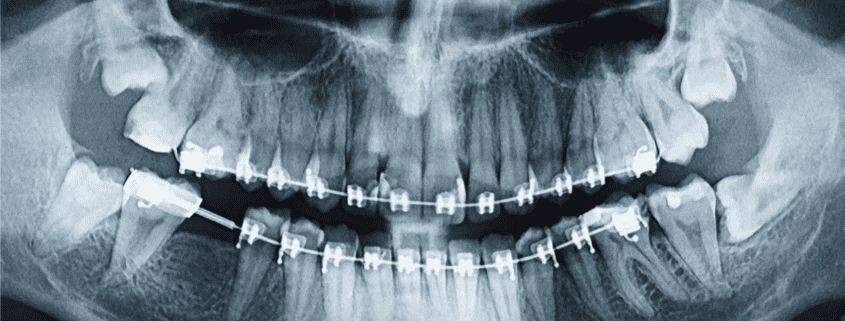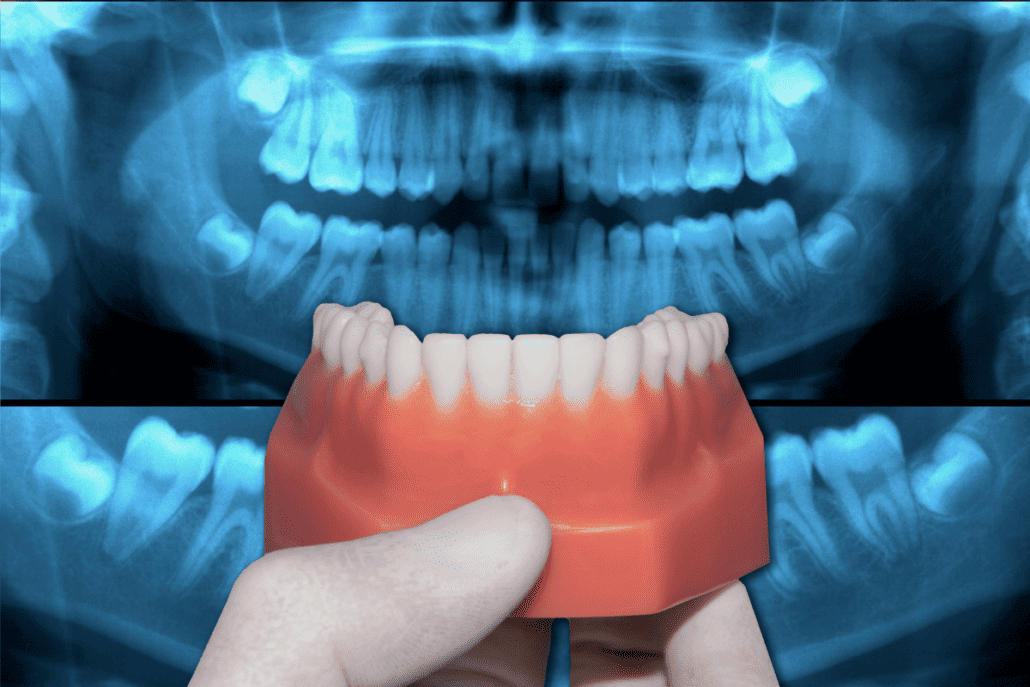Orthodontic X-Rays With Braces – Are They Safe?
Last Updated on October 18, 2023 by Gio Greenard
When it comes to achieving the perfect smile and ensuring oral health, Orthodontic X rays have a crucial role to play. Often a part of a comprehensive dental examination, these X-rays give your orthodontist a detailed inside look at your teeth, jaw, and the soft tissues surrounding your oral cavity. But why are they so essential, and how do they aid in the orthodontic journey? Let’s delve deeper into understanding more about Orthodontic X rays.
“Orthodontic X-rays are like a roadmap for your orthodontist. They allow for a clear view of what is happening beneath the surface, providing valuable information used to plan and execute effective treatment strategies.”
In this article, we will discuss what orthodontic X-rays are, the different types, how they work, their importance in orthodontic treatment planning, and safety matters concerning their usage. Along the way, we’ll address some common misconceptions and put your mind at ease regarding any concerns you might have about Orthodontic X-rays.
- What are Orthodontic X-rays?
- Types of Orthodontic X-rays
- How do Orthodontic X-rays Work?
- Importance of Orthodontic X-rays in Treatment Planning
- Safety of Orthodontic X-rays
So, let’s unravel the mystery behind Orthodontic X-rays and find out why they are a pivotal part of the overall orthodontic treatment process.
Contents
What are Orthodontic X-rays?
Orthodontic X-rays are a type of radiograph used in orthodontics to examine what is happening with the jaws and below the gums. Unlike dental X-rays that primarily focus on detecting issues like tooth decay, missing or extra teeth, orthodontic X-rays are integral to assessing the relationship between teeth and jaws, evaluating tooth development, and observing emerging and impacted teeth. This type of X-ray is beneficial before, during, and after orthodontic treatment, enabling the orthodontist to thoroughly assess oral health, plan treatment and monitor progress.
Types of Orthodontic X-rays
There are several types of orthodontic X-rays, each with a unique purpose:
Panoramic X-rays: These X-rays provide a broad view of both the upper and lower jaws, used to see emerging and impacted teeth and monitor tooth development.
Cephalometric X-rays: These show the relationship between the teeth and jaws, assisting orthodontists when planning treatment involving the jaw alignment.
Computed tomography (CT) scans: These give a three-dimensional view of the teeth and jaws, providing detailed information to guide treatment planning and assessment.
How do Orthodontic X-rays Work?
Orthodontic X-rays are typically taken by a dental radiographer using low levels of radiation. These radiographs work by passing controlled bursts of X-ray radiation through the soft tissues of the mouth, which are absorbed differently by different materials. The most absorption occurs in areas with denser material, such as bones and teeth. The resulting images enable orthodontists to see beneath the visible oral tissues and diagnose problems hidden from a standard clinical examination.
Importance of Orthodontic X-rays in Treatment Planning
X-rays assist orthodontists in preparing highly precise and effective treatment plans. They help determine if tooth extractions are necessary before orthodontic treatment, identify misaligned teeth and jaws, and reveal impacted teeth that could complicate treatment. During treatment, additional X-rays may be taken to check on the positions of teeth and their roots, ensuring everything is progressing as expected.
Safety of Orthodontic X-rays
Orthodontic X-rays are generally safe as they use low levels of radiation. Radiographers take several precautions, such as protective lead aprons and collars, to ensure the dose of radiation received is as low as possible. It is important to note that the benefits of these X-rays, such as accurate diagnosis and treatment planning, outweigh any potential risks. As with any medical procedure, if you have concerns about orthodontic X-rays, feel free to discuss them with your orthodontist.
What are the common findings and abnormalities that orthodontic X-rays can help identify?
Orthodontic X-rays are a crucial tool for dentists and orthodontists as they provide a detailed view of one’s oral health, assisting in the detection and examination of various conditions and abnormalities. They provide an in-depth analysis of what’s happening above and below gums, including the jaws. This aids in the accurate diagnosis and formulation of treatment plans.
Common Findings from Orthodontic X-rays
Orthodontic X-rays reveal significant information which is not visible during a standard clinical examination. They make it possible to examine the root structure and bone surrounding the teeth, providing a deeper insight into an individual’s oral health. They are used for a variety of reasons like:
- Detecting Decay: Hidden cavities between teeth or under fillings are easily identifiable by orthodontic X-rays.
- Identifying Tooth Position: X-rays can show teeth that have not yet broken through the gum line, helping to predict any future problems that might occur.
- Checking Root Health: X-rays expose the health of a tooth’s root and surrounding bone structure, aiding in the detection of any issues that may lead to tooth loss.
Abnormalities Identified by Orthodontic X-rays
Apart from these standard revelations, orthodontic X-rays are efficient in identifying several oral health abnormalities. These include:
Malformed, Missing or Extra Teeth: X-rays can easily point out if there are malformed, missing, or extra teeth, which plays a critical role in planning orthodontic intervention.
Impacted Teeth: Teeth that are blocked from breaking through the gum line, or impacted, are identifiable with an X-ray. This is critical to avoid infection or damage to adjacent teeth.
Issues with Jawbone: Disorders of the jawbone, such as tumors or cysts, can be detected by a thorough X-ray examination.
Teeth and Root Position: X-rays reveal the position of teeth and roots, especially the ones which are not visible to the naked eye. Pinpointing the exact location is vital in orthodontic treatments like braces.
Therefore, orthodontic X-rays play a significant role not just in identifying, but also in preventing possible oral health issues, ensuring patients a healthier and smile-filled future.
In Summary
Orthodontic X-rays serve as a crucial tool in the field of orthodontics. These provide comprehensive insights, incredibly valuable for the diagnosis, prevention, and treatment of various oral health issues.
By utilizing the technology of orthodontic X-rays, the health professional isn’t merely reactive, dealing with existing oral health issues. Instead, they proactively identify potential problems, circumventing serious complications down the line.
This preventative approach equips patients with the knowledge and the opportunities to enjoy a healthier oral condition and a more confident smile in the future.
- Orthodontic X-rays enable thorough and accurate diagnosis
- They play an instrumental role in preventing potential complications
- Empowers patients with a healthier and brighter oral future
| Benefits | Description |
|---|---|
| Accurate Diagnosis | Enables the orthodontist to gather comprehensive information about the patient’s oral condition |
| Prevention | Orthodontics X-rays allow for early detection of potential issues, leading to timely interventions |
| Patient Empowerment | Jobs’ opportunities for a healthier oral condition, resulting in a confident and healthy smile |
So, embrace the usage of Orthodontic X-rays in your orthodontic journey not just for its diagnostic abilities, but also for a chance at a healthier, happier oral future. A daunting task can turn out to be a stepping stone to your radiant smiles!

Dr Patti Panucci attended the University of Louisville School of Dentistry for four years, where she graduated with a DMD degree (May 2000) among the Top 10 in her class. Following that, she headed west to Los Angeles to complete her three-year residency at one of the top-ranked orthodontic programs in the country – the University of Southern California.
Along with her certificate in orthodontics, Dr. Panucci earned a master’s degree in craniofacial biology. During those three years, she fell in love with Southern California beach life and decided that this was where her future lay.





Leave a Reply
Want to join the discussion?Feel free to contribute!